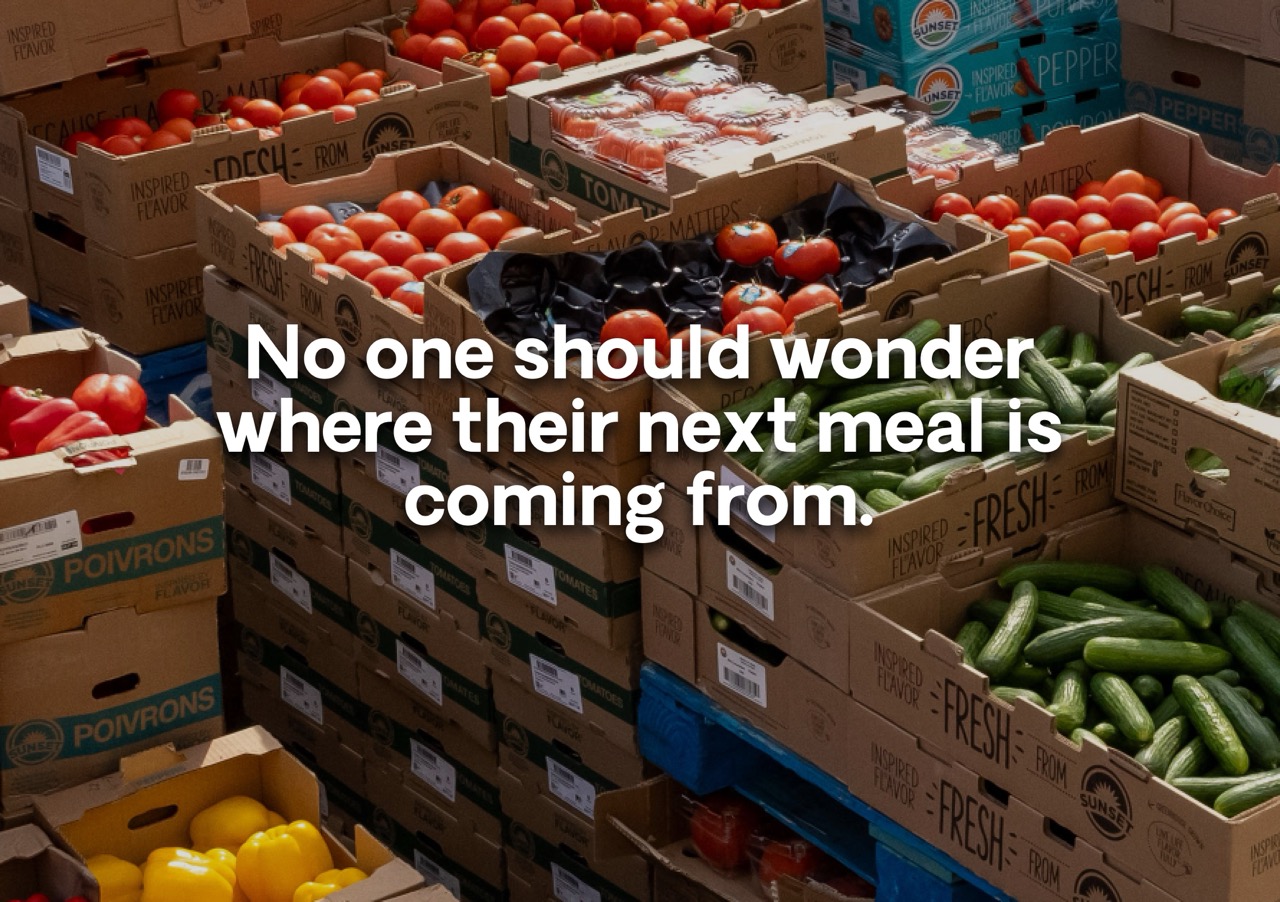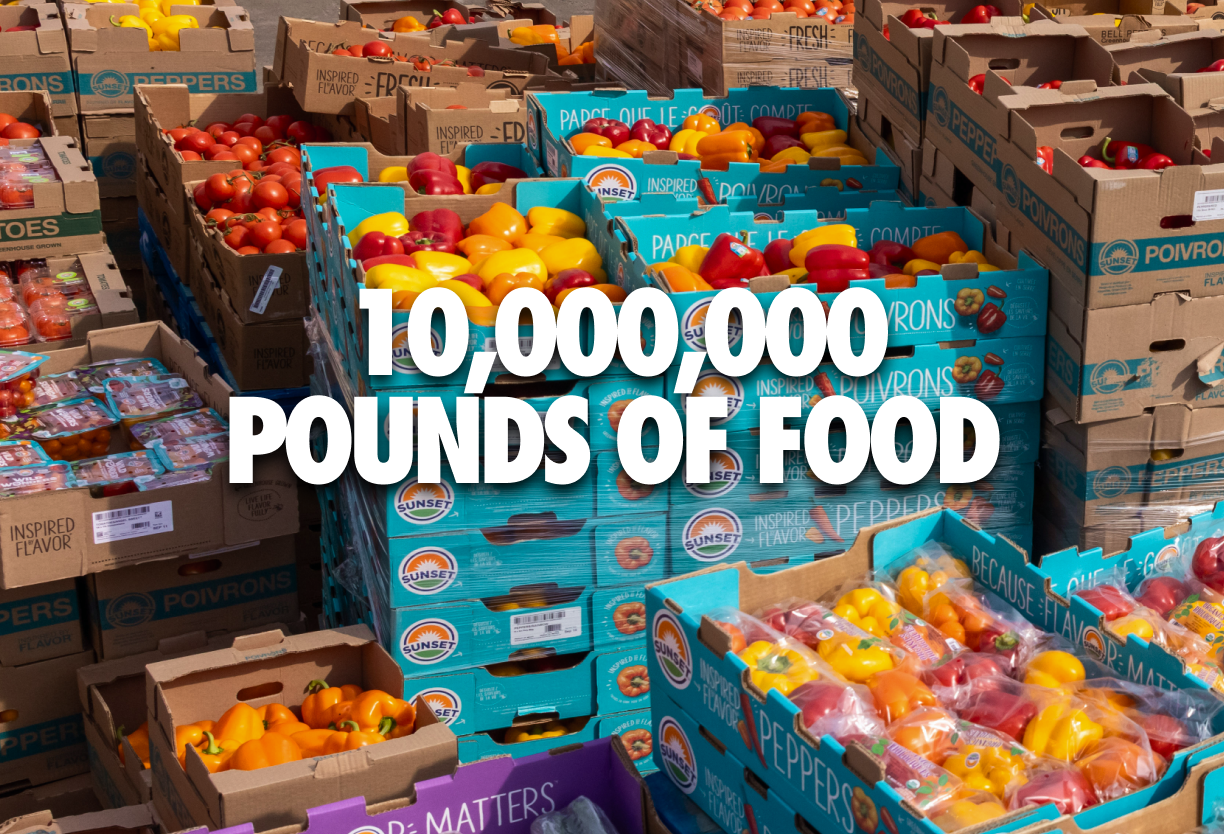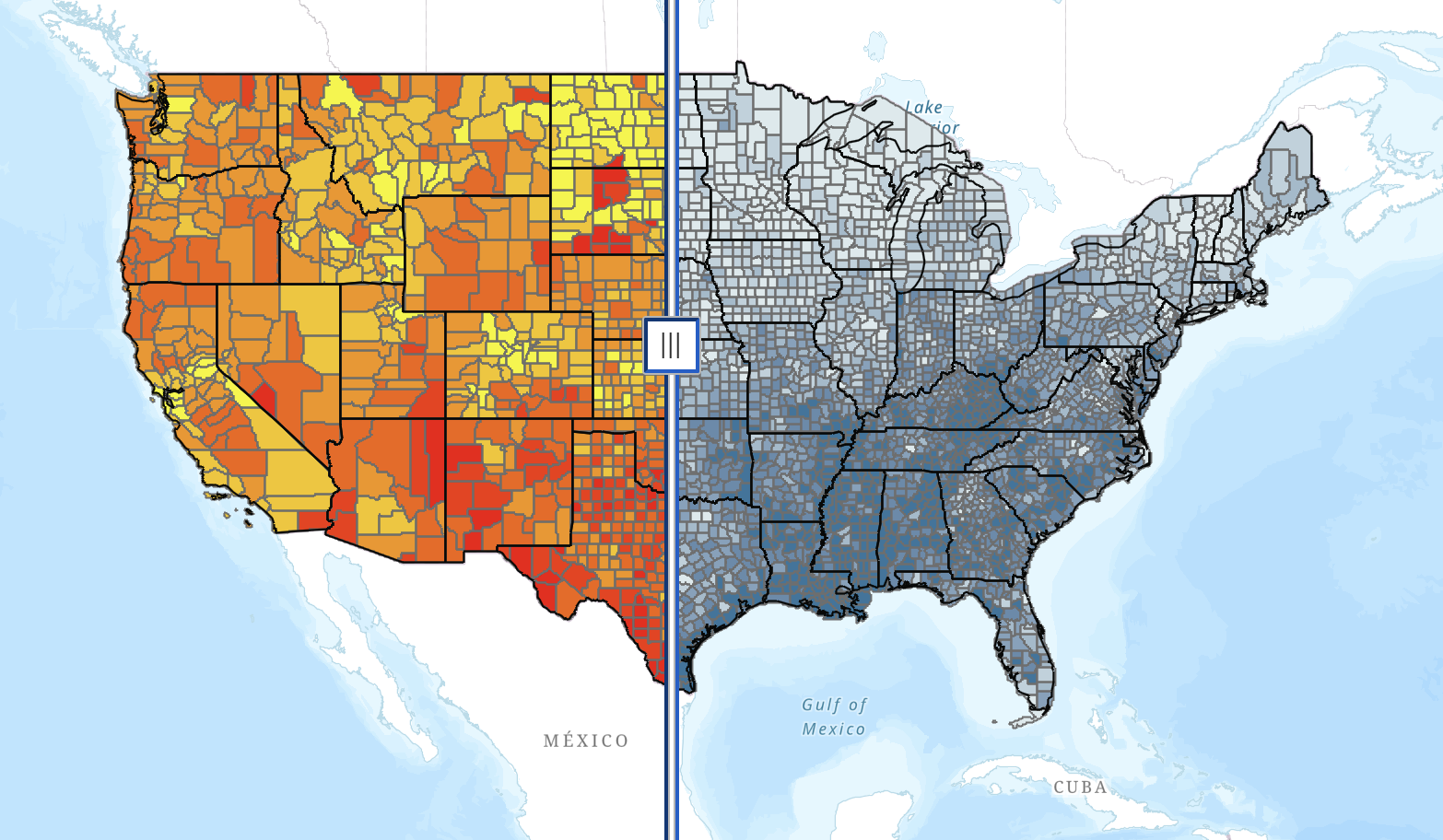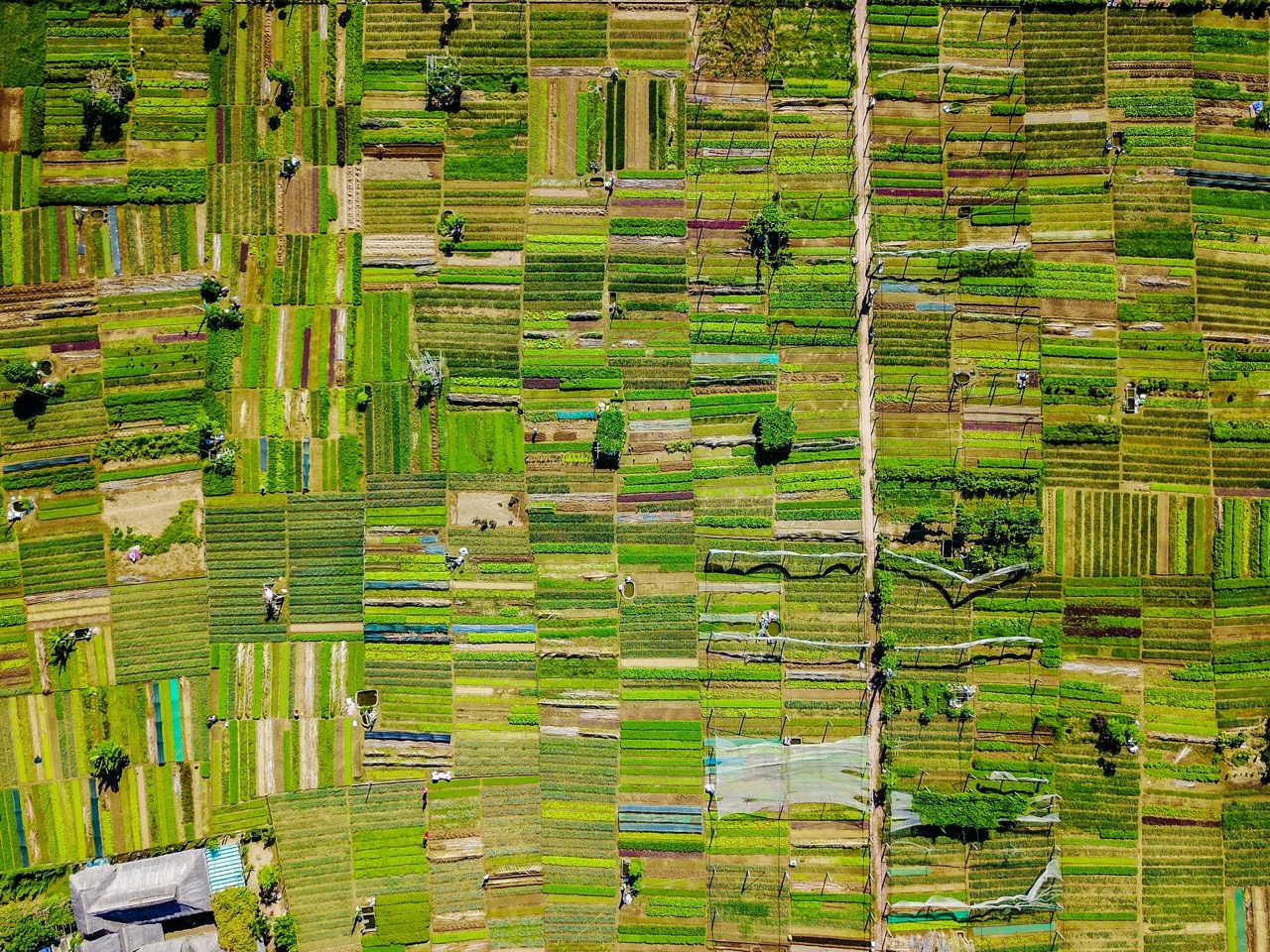At 6:45 am on August 11th, my dad and I arrived at an inconspicuous industrial warehouse lot in Secaucus, New Jersey. The world was already awake and bustling with energy as we drove across the George Washington Bridge earlier that morning, with a view of the misty New York City skyline to our left. Once we arrived at the lot, we attempted to gather our bearings as we moved towards a line of parked trucks. Then, I spotted the Table to Table truck and let out a sigh of relief. We were in the right place. I noticed a man near the truck, who I recognized as David Porra from pictures and videos taken by fellow Farmlinker, Jules Hartman, at a previous delivery. Shortly after my dad and I arrived, an enormous truck pulled up, and David proceeded to vigorously unload 22 pallets (4,224 gallons) of 1% milk. You would have never known that it was barely 7 am just by watching David energetically utilize pallet trucks and forklifts to bring pallet after pallet into the Table to Table truck or beside an adjacent warehouse. He repeatedly apologized to the milk truck driver for the delay, not wanting to interfere with his schedule, already demonstrating how much he cares about others.
This delivery was our fourth delivery of 1% milk to the New Jersey nonprofit Table to Table (you can read more about our partnership with Table to Table here). The organization distributes food to Bergen, Essex, Hudson and Passaic counties in northern New Jersey. David has worked as a Table to Table truck driver for nearly nine years, spending his days delivering food to local agencies, community organizations, and food pantries. On July 21st, Jules Hartman interviewed David to learn more about his role at Table to Table. He is passionate about the essential work he does:
“One of the things I love about working for Table to Table is that we help the community. We bring food to the community, to all those people that really need it. And especially now when you can see a lot of people really need food. A lot of people lost their job. And that’s one of the things that every night when I go to bed, I feel comfortable and I feel happy because I see and I can feel that somebody got something to eat before going to bed.”
David described the changes that have occurred since the beginning of the Covid-19 pandemic, highlighting the increased demand for food at partner agencies: “We got a lot of calls from the agencies that really need food. ‘David, Julie, we need more food, can you just bring more food to us?’ Everyday you see a line, uh, maybe 200 people standing just waiting for food.” Julie Kinner is the Director of Recipient Relations & Community Affairs at Table to Table. David, as the Lead Driver & Manager of Logistics for Table to Table, works closely with fellow supervisor Julie to make each of these local deliveries happen.

The simple, efficient process that Table to Table maintains for distributing the milk to partner agencies amazes me. David loads about five pallets onto the Table to Table truck everyday, distributing them to different communities in need. The rest of the milk remains in the refrigerated warehouse until all of the pallets are delivered. Over the course of six deliveries, The Farmlink Project has facilitated the delivery of over 214,000 pounds of milk to Table to Table. Furthermore, according to the Table to Table website, the organization delivered the equivalent of 26 million meals to people in need in New Jersey in 2019. Nonetheless, David knows that there is still much work to be done: “One of the hopes is to try to get more people to donate more food to help the community more. Even more.”
As my dad and I prepared to hop in our car and travel home, David gave me a fist bump, just as he had done after I arrived. To me, this greeting represented teamwork and how we are all connected in this mission of providing food to food insecure communities. Speaking of connections, I happened to be back in northern New Jersey later that week visiting family. While my parents and I sat in our car waiting for the street light to turn green in the town of Wanaque in Passaic County, I saw a white truck with a familiar green and purple logo drive in front of us. I excitedly pointed out the Table to Table truck to my parents and exclaimed how this was such a strange coincidence. But really, it demonstrates Table to Table’s widespread commitment to the communities they serve. David embodies this commitment to feeding the community. I wondered if David was driving that truck.
< Back
At 6:45 am on August 11th, my dad and I arrived at an inconspicuous industrial warehouse lot in Secaucus, New Jersey. The world was already awake and bustling with energy as we drove across the George Washington Bridge earlier that morning, with a view of the misty New York City skyline to our left. Once we arrived at the lot, we attempted to gather our bearings as we moved towards a line of parked trucks. Then, I spotted the Table to Table truck and let out a sigh of relief. We were in the right place. I noticed a man near the truck, who I recognized as David Porra from pictures and videos taken by fellow Farmlinker, Jules Hartman, at a previous delivery. Shortly after my dad and I arrived, an enormous truck pulled up, and David proceeded to vigorously unload 22 pallets (4,224 gallons) of 1% milk. You would have never known that it was barely 7 am just by watching David energetically utilize pallet trucks and forklifts to bring pallet after pallet into the Table to Table truck or beside an adjacent warehouse. He repeatedly apologized to the milk truck driver for the delay, not wanting to interfere with his schedule, already demonstrating how much he cares about others.
This delivery was our fourth delivery of 1% milk to the New Jersey nonprofit Table to Table (you can read more about our partnership with Table to Table here). The organization distributes food to Bergen, Essex, Hudson and Passaic counties in northern New Jersey. David has worked as a Table to Table truck driver for nearly nine years, spending his days delivering food to local agencies, community organizations, and food pantries. On July 21st, Jules Hartman interviewed David to learn more about his role at Table to Table. He is passionate about the essential work he does:
“One of the things I love about working for Table to Table is that we help the community. We bring food to the community, to all those people that really need it. And especially now when you can see a lot of people really need food. A lot of people lost their job. And that’s one of the things that every night when I go to bed, I feel comfortable and I feel happy because I see and I can feel that somebody got something to eat before going to bed.”
David described the changes that have occurred since the beginning of the Covid-19 pandemic, highlighting the increased demand for food at partner agencies: “We got a lot of calls from the agencies that really need food. ‘David, Julie, we need more food, can you just bring more food to us?’ Everyday you see a line, uh, maybe 200 people standing just waiting for food.” Julie Kinner is the Director of Recipient Relations & Community Affairs at Table to Table. David, as the Lead Driver & Manager of Logistics for Table to Table, works closely with fellow supervisor Julie to make each of these local deliveries happen.

The simple, efficient process that Table to Table maintains for distributing the milk to partner agencies amazes me. David loads about five pallets onto the Table to Table truck everyday, distributing them to different communities in need. The rest of the milk remains in the refrigerated warehouse until all of the pallets are delivered. Over the course of six deliveries, The Farmlink Project has facilitated the delivery of over 214,000 pounds of milk to Table to Table. Furthermore, according to the Table to Table website, the organization delivered the equivalent of 26 million meals to people in need in New Jersey in 2019. Nonetheless, David knows that there is still much work to be done: “One of the hopes is to try to get more people to donate more food to help the community more. Even more.”
As my dad and I prepared to hop in our car and travel home, David gave me a fist bump, just as he had done after I arrived. To me, this greeting represented teamwork and how we are all connected in this mission of providing food to food insecure communities. Speaking of connections, I happened to be back in northern New Jersey later that week visiting family. While my parents and I sat in our car waiting for the street light to turn green in the town of Wanaque in Passaic County, I saw a white truck with a familiar green and purple logo drive in front of us. I excitedly pointed out the Table to Table truck to my parents and exclaimed how this was such a strange coincidence. But really, it demonstrates Table to Table’s widespread commitment to the communities they serve. David embodies this commitment to feeding the community. I wondered if David was driving that truck.
David Porra
Table to Table Truck Driver
At 6:45 am on August 11th, my dad and I arrived at an inconspicuous industrial warehouse lot in Secaucus, New Jersey. The world was already awake and bustling with energy as we drove across the George Washington Bridge earlier that morning, with a view of the misty New York City skyline to our left. Once we arrived at the lot, we attempted to gather our bearings as we moved towards a line of parked trucks. Then, I spotted the Table to Table truck and let out a sigh of relief. We were in the right place. I noticed a man near the truck, who I recognized as David Porra from pictures and videos taken by fellow Farmlinker, Jules Hartman, at a previous delivery. Shortly after my dad and I arrived, an enormous truck pulled up, and David proceeded to vigorously unload 22 pallets (4,224 gallons) of 1% milk. You would have never known that it was barely 7 am just by watching David energetically utilize pallet trucks and forklifts to bring pallet after pallet into the Table to Table truck or beside an adjacent warehouse. He repeatedly apologized to the milk truck driver for the delay, not wanting to interfere with his schedule, already demonstrating how much he cares about others.
This delivery was our fourth delivery of 1% milk to the New Jersey nonprofit Table to Table (you can read more about our partnership with Table to Table here). The organization distributes food to Bergen, Essex, Hudson and Passaic counties in northern New Jersey. David has worked as a Table to Table truck driver for nearly nine years, spending his days delivering food to local agencies, community organizations, and food pantries. On July 21st, Jules Hartman interviewed David to learn more about his role at Table to Table. He is passionate about the essential work he does:
“One of the things I love about working for Table to Table is that we help the community. We bring food to the community, to all those people that really need it. And especially now when you can see a lot of people really need food. A lot of people lost their job. And that’s one of the things that every night when I go to bed, I feel comfortable and I feel happy because I see and I can feel that somebody got something to eat before going to bed.”
David described the changes that have occurred since the beginning of the Covid-19 pandemic, highlighting the increased demand for food at partner agencies: “We got a lot of calls from the agencies that really need food. ‘David, Julie, we need more food, can you just bring more food to us?’ Everyday you see a line, uh, maybe 200 people standing just waiting for food.” Julie Kinner is the Director of Recipient Relations & Community Affairs at Table to Table. David, as the Lead Driver & Manager of Logistics for Table to Table, works closely with fellow supervisor Julie to make each of these local deliveries happen.

The simple, efficient process that Table to Table maintains for distributing the milk to partner agencies amazes me. David loads about five pallets onto the Table to Table truck everyday, distributing them to different communities in need. The rest of the milk remains in the refrigerated warehouse until all of the pallets are delivered. Over the course of six deliveries, The Farmlink Project has facilitated the delivery of over 214,000 pounds of milk to Table to Table. Furthermore, according to the Table to Table website, the organization delivered the equivalent of 26 million meals to people in need in New Jersey in 2019. Nonetheless, David knows that there is still much work to be done: “One of the hopes is to try to get more people to donate more food to help the community more. Even more.”
As my dad and I prepared to hop in our car and travel home, David gave me a fist bump, just as he had done after I arrived. To me, this greeting represented teamwork and how we are all connected in this mission of providing food to food insecure communities. Speaking of connections, I happened to be back in northern New Jersey later that week visiting family. While my parents and I sat in our car waiting for the street light to turn green in the town of Wanaque in Passaic County, I saw a white truck with a familiar green and purple logo drive in front of us. I excitedly pointed out the Table to Table truck to my parents and exclaimed how this was such a strange coincidence. But really, it demonstrates Table to Table’s widespread commitment to the communities they serve. David embodies this commitment to feeding the community. I wondered if David was driving that truck.
.png)








.svg)
.svg)
.svg)